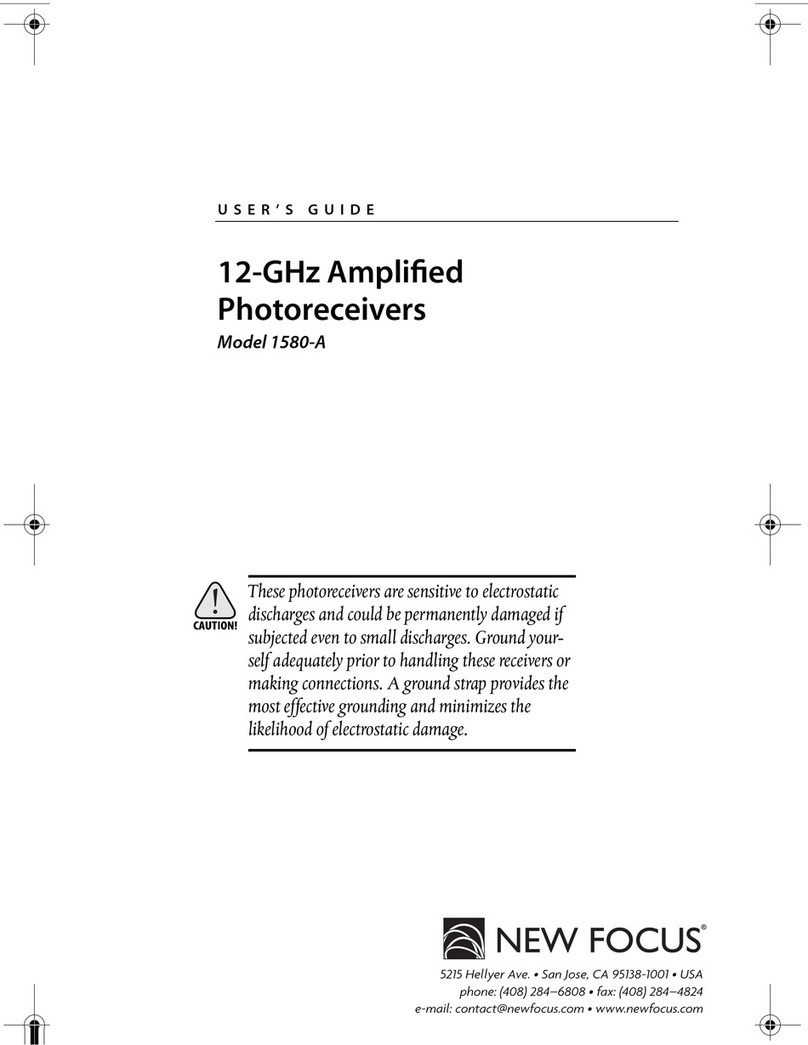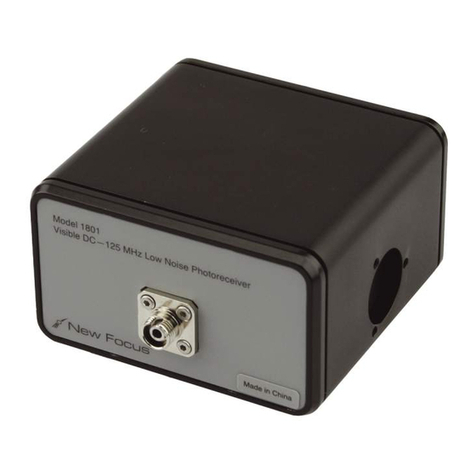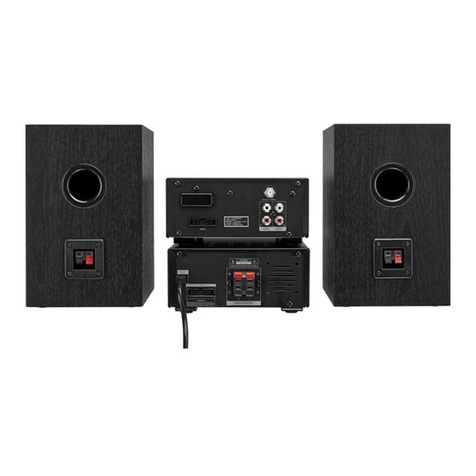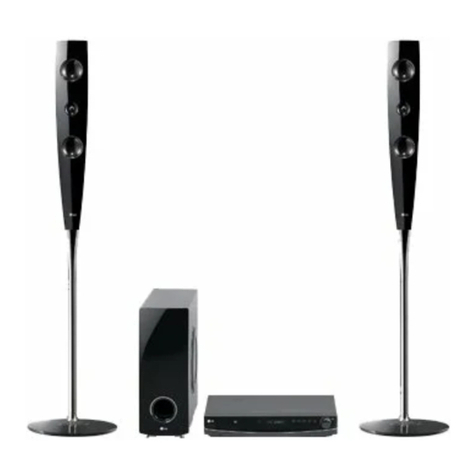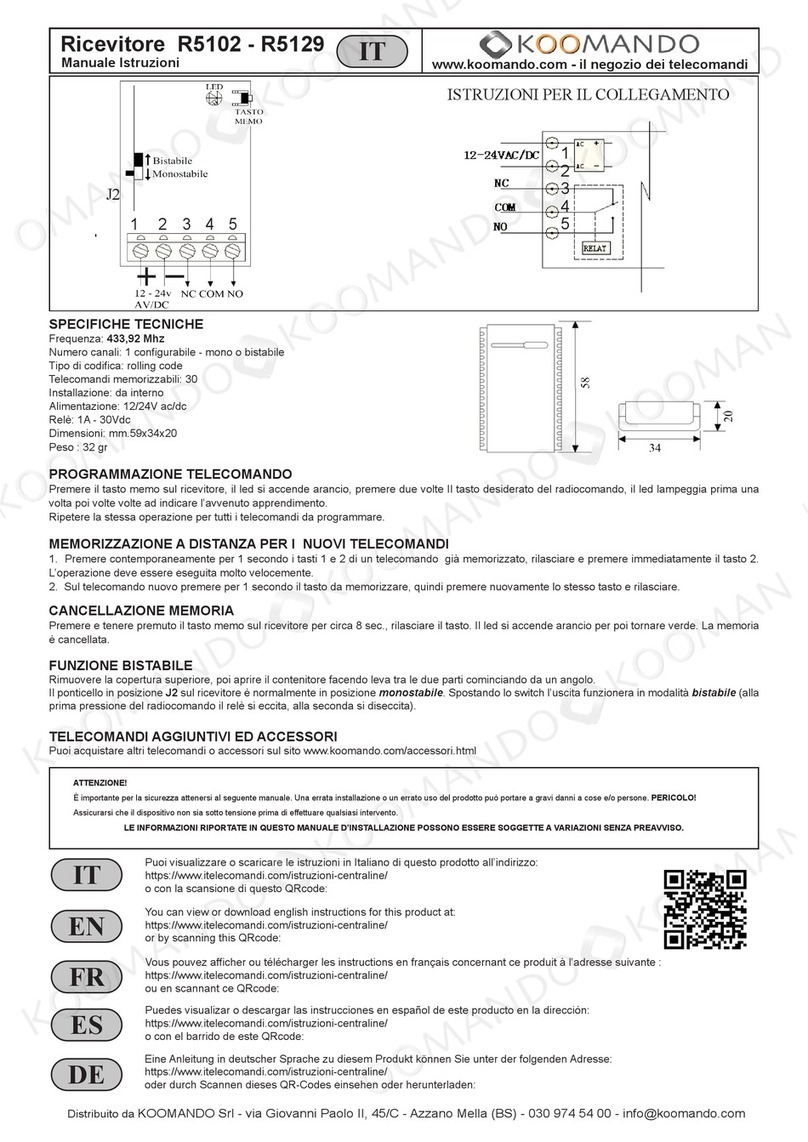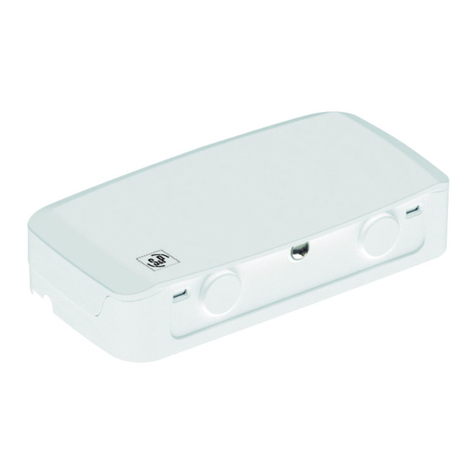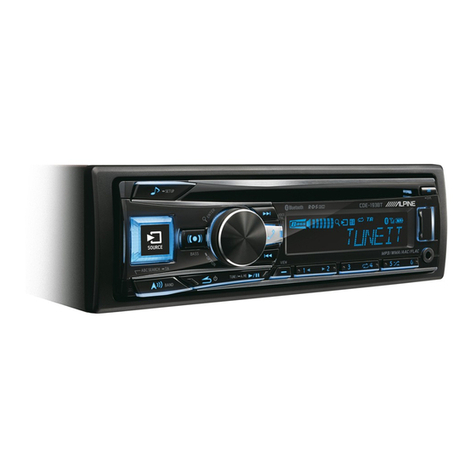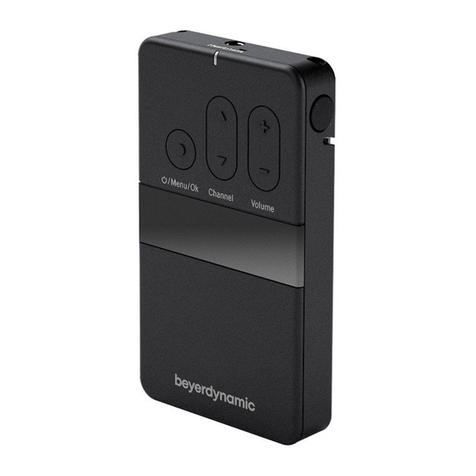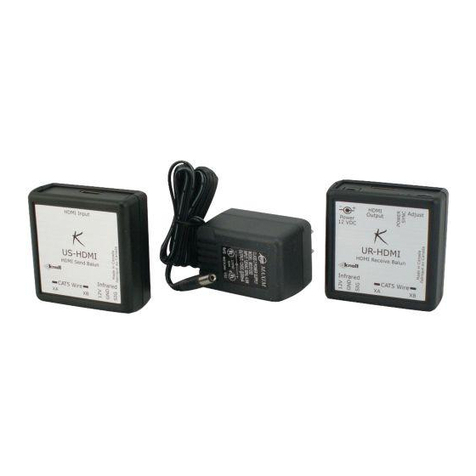New Focus 1544-B User manual

-~
ARTISAN
®
~I
TECHNOLOGY
GROUP
Your definitive source
for
quality
pre-owned
equipment.
Artisan Technology
Group
Full-service,
independent
repair
center
with
experienced
engineers
and
technicians
on staff.
We
buy
your
excess,
underutilized,
and
idle
equipment
along
with
credit
for
buybacks
and
trade-ins
.
Custom
engineering
so
your
equipment
works
exactly as
you
specify.
•
Critical
and
expedited
services
•
Leasing
/
Rentals/
Demos
• In
stock/
Ready-to-ship
•
!TAR-certified
secure
asset
solutions
Expert
team
ITrust
guarantee
I
100%
satisfaction
All
tr
ademarks,
br
a
nd
names, a
nd
br
a
nd
s a
pp
earing here
in
are
th
e property of
th
e
ir
r
es
pecti
ve
ow
ner
s.
Find the Newport / New Focus 1554-B-50 at our website: Click HERE

USER’S GUIDE
DC to 12-GHz Amplified
Photoreceivers
Models 1544-B, 1554-B, & 1580-B
Including multimode “-50” option
These photoreceivers are sensitive to electrostatic
discharges and could be permanently damaged if
subjected even to small discharges. Ground your-
self adequately prior to handling these receivers or
making connections. A ground strap provides the
most effective grounding and minimizes the
likelihood of electrostatic damage.
2584 Junction Ave. • San Jose, CA 95134-1902 • USA
phone: 408) 919-1500 • e-mail: [email protected]om • www.newfocus.com
Artisan Technology Group - Quality Instrumentation ... Guaranteed | (888) 88-SOURCE | www.artisantg.com

Warranty
New Focus, Inc. guarantees its products to be free of defects for one year from
the date of shipment. This is in lieu of all other guarantees, expressed or implied,
and does not cover incidental or consequential loss.
Information in this document is subject to change without notice.
Copyright 2003, 2002–1998, New Focus, Inc. All rights reserved.
The logo and NEW FOCUS, Inc. are registered trademarks of
NEW FOCUS, Inc.
Document Number 155403 Rev. A
Artisan Technology Group - Quality Instrumentation ... Guaranteed | (888) 88-SOURCE | www.artisantg.com

DC to 12-GHz Photoreceivers Contents • 3
Contents
Operation 5
Introduction . . . . . . . . . . . . . . . . . . . . . . . . . . . . . . . . . . . . . . . . . . . 5
Handling Precautions . . . . . . . . . . . . . . . . . . . . . . . . . . . . . . . . . . . 6
Connecting the Power Supply and Bias . . . . . . . . . . . . . . . . . . 6
Microwave Connection and Set-up . . . . . . . . . . . . . . . . . . . . . . 7
Connecting the Receiver to the Optical Input. . . . . . . . . . . . . 8
Troubleshooting 9
Testing the Photodiode . . . . . . . . . . . . . . . . . . . . . . . . . . . . . . . . . 9
Checking the DC-Offset Voltage . . . . . . . . . . . . . . . . . . . . . . . . . 9
Basic Optical Test. . . . . . . . . . . . . . . . . . . . . . . . . . . . . . . . . . . . . . 10
Characteristics 11
Characteristics. . . . . . . . . . . . . . . . . . . . . . . . . . . . . . . . . . . . . . . . . 11
Responsivity . . . . . . . . . . . . . . . . . . . . . . . . . . . . . . . . . . . . . . . . . . 12
Customer Service 13
Technical Support . . . . . . . . . . . . . . . . . . . . . . . . . . . . . . . . . . . . . 13
Service . . . . . . . . . . . . . . . . . . . . . . . . . . . . . . . . . . . . . . . . . . . . . . . . 13
Appendix I: Optical-Fiber Performance 15
Appendix II: Microwave Connectors 17
Appendix III: Inside the Photoreceiver 19
Artisan Technology Group - Quality Instrumentation ... Guaranteed | (888) 88-SOURCE | www.artisantg.com

4 • Contents NEW FOCUS, Inc.
Artisan Technology Group - Quality Instrumentation ... Guaranteed | (888) 88-SOURCE | www.artisantg.com

DC to 12-GHz Photoreceivers Operation • 5
Operation
Introduction
High-speed measurements down to a few microwatts
are easy with the Models 1544-B,1554-B, and 1580-B
photoreceiver modules. These modules convert
optical signals to electronic signals, in effect, giving
every high-speed/high-frequency instrument in your
lab an optical input.
In the “-B” models the optical signal is delivered to the
photodiode through a single-mode fiber, whereas the
“-50” models use multimode 50/125 µm fiber input.
Models 1544 and 1554 consist of InGaAs photodiodes;
Model 1580 features a GaAs photodiode. The small
size of the module allows you to connect it directly to
your test instrument or amplifier. This eliminates the
need to follow the photoreceiver with coaxial cable,
which can seriously distort picosecond pulses and
attenuate microwave signals.
Figure 1:
Models 1544-B,
1554-B, and
1580-B
photoreceiver
modules
FC connector
Bias-monitor port—output
is equal to photodiode current
times 1000 Ω, for 1 mV/µA.
Power on LED
Coupling
Switch
2.25 (57.1)
2.00 (50.8)
2.00 (50.8)
1.00 (25.4)
3.16 (80.2)
.56 (14.2)
1.60 (40.7)
Output K-connector
Power connector
(±15V)
Artisan Technology Group - Quality Instrumentation ... Guaranteed | (888) 88-SOURCE | www.artisantg.com

6 • Operation NEW FOCUS, Inc.
Handling Precautions
Whenever handling the photoreceiver, make sure to
follow these precautions:
• Follow standard electrostatic-discharge
precautions, including grounding yourself prior to
handling the detector or making connections—
even small electrostatic discharges could
permanently damage the detector. A ground strap
provides the most effective grounding and
minimizes the likelihood of electrostatic damage.
• Do not over torque the microwave K-connector.
Excessive torque can damage connectors.
• Make sure the optical connector is clean and
undamaged before connecting it to the detector
module.
Connecting the Power Supply and Bias
1.
Prior to handling the detector, ground yourself
with a grounding strap to prevent electrostatic
damage to the receiver.
2.
Connect the power cable to the power supply. Two
power cables were included with the receiver; use
the appropriate cable for your power supply.
Connecting to a New Focus power supply:
Use
the cable with the two round microconnectors.
Connect one end of the cable to one of the power
supply’s 300-mA outputs.
Connecting to another power supply:
Use the
cable with the round microconnector on one end
and three banana plugs on the other end. Be
careful to connect the banana plugs to the power
supply as follows; connect the red plug to a well-
regulated, +15-V, 200-mA source; connect the
black plug to a -15-V, 200-mA source; connect
Artisan Technology Group - Quality Instrumentation ... Guaranteed | (888) 88-SOURCE | www.artisantg.com

DC to 12-GHz Photoreceivers Operation • 7
the green plug to the common ground of the
two sources.
3.
Connect the bias-monitor port to a voltmeter and
observe the voltage level. This voltage is the DC
offset plus dark current. This dark voltage should
be less than 5 mV. This monitor output is present
in both the DC- and AC-coupled modes.
If you are coupling light into a fiber, use the voltmeter to
monitor the photocurrent to help optimize the coupling.
Microwave Connection and Set-up
1.
Connect the photoreceiver module’s microwave
connector to a test instrument that has a 50-
Ω
input, such as an oscilloscope or spectrum ana-
lyzer, or to another 50-
Ω
load. If necessary, use a
high-frequency cable (best performance is
achieved without a cable).
2.
To avoid connector damage and signal distortion,
be sure that the cable and the instrument you
intend to connect to the module have compatible
connectors. See “Appendix II: Microwave
Connectors” on page 17 for a list of compatible
connectors.
3.
These photoreceivers have a front panel switch to
select either the DC- or AC-coupled electrical
output. In the DC-coupled mode, the RF output is
the sum of DC offset plus AC signal, and this mode
is indicated by a red light. In the AC-coupled mode
only the AC signal is present at the output and is
indicated by a green light.
Note:
Note:
Artisan Technology Group - Quality Instrumentation ... Guaranteed | (888) 88-SOURCE | www.artisantg.com

8 • Operation NEW FOCUS, Inc.
Connecting the Receiver to the Optical Input
To avoid signal distortion, the optical fiber used to
deliver the optical signal to the photoreceiver should
be single mode at the operating wavelength and the
cable length should be no longer than necessary. If you
have the multimode “-50” model, you can use either
single-mode or 50/125-µm multimode fiber.
1.
Before connecting the photoreceiver, measure the
power in the fiber to ensure it is within the safe
operating range. For a pulsed input, determine the
maximum (peak) power.
You may want to use the New Focus Model
2011-FC 200-kHz Photoreceiver for this purpose;
it has a higher maximum pulse power, and has the
sensitivity to aid in fiber alignment.
2.
Connect the fiber-optic cable to the fiber-optic
input.
Artisan Technology Group - Quality Instrumentation ... Guaranteed | (888) 88-SOURCE | www.artisantg.com

DC to 12-GHz Photoreceivers Troubleshooting • 9
Troubleshooting
Testing the Photodiode
The photodiode can be damaged by electrostatic
discharge or excessive optical power, which can lead to
an increased dark (or
offset
) voltage. A damaged
photodiode can result in a degraded responsivity and
frequency/impulse response. See “Checking the DC-
Offset Voltage,” below.
Other problems, such as a damaged amplifier, are
more difficult to diagnose. If the response from your
receiver is lower than you expect, contact New Focus
to arrange for a repair (see “Customer Service” on
page 13).
Checking the DC-Offset Voltage
1.
With no light on the photodetector, turn the
detector on.
2.
Use a voltmeter to measure the Bias Monitor
output voltage. This voltage is the DC offset plus
dark current.
3.
If the output is >5 mV, then the detector is
probably damaged and will need to be returned to
New Focus.
If the output is <5 mV, then perform the Basic
Optical Test described below.
Artisan Technology Group - Quality Instrumentation ... Guaranteed | (888) 88-SOURCE | www.artisantg.com

10 • Troubleshooting NEW FOCUS, Inc.
Basic Optical Test
To quickly test the photodiode in your receiver, run
this simple DC optical test.
1.
Turn the receiver on.
2.
Using a voltmeter or oscilloscope, measure the
output voltage from the Bias Monitor on the front
panel of the bias supply.
With no light on the detector, the Bias Monitor
voltage should be <5 mV.
3.
Illuminate the photodetector.
4.
With the voltmeter or oscilloscope, you should
observe a DC output voltage.
If you know the optical power and wavelength,
you can calculate the expected output voltage
(
V
out
) using the expression:
V
out
=
P
in
•
R
•
G
, where
P
in
is the input optical power (watts),
R
is the
photodetector’s responsivity (A/W) as shown in
Figure 2, and
G
is the amplifier’s transimpedance
gain (V/A). The gain of the bias monitor port is
1000 V/A.
If the output voltage is low, then contact New Focus to
arrange for a repair (see “Customer Service” on
page 13).
Artisan Technology Group - Quality Instrumentation ... Guaranteed | (888) 88-SOURCE | www.artisantg.com

DC to 12-GHz Photoreceivers Characteristics • 11
Characteristics
Characteristics
Model # 1544-B 1554-B 1580-B
Wavelength Range
(multimode versions)
400–1650 nm
550–1330 nm
950–1650 nm
950–1650 nm
400–870 nm
Minimum 3-dB Bandwidth DC to 12 GHz DC to 12 GHz DC to 12 GHz
Low Frequency Cut-off
(AC-coupled mode)
10 KHz 10 KHz 10 KHz
Rise Time 30 ps 30 ps 30 ps
Peak Conversion Gain -200 V/W -600 V/W -400 V/W
Typical Maximum
Responsivity
0.2 A/W 0.6 A/W 0.4 A/W
Transimpedance Gain -1000 V/A -1000 V/A -1000 V/A
Output Impedance 50
Ω
50
Ω
50
Ω
Minimum NEP 100 pW/ 33 pW/ 50 pW/
DC-Bias Monitor
Bandwidth
50 KHz 50 KHz 50 KHz
DC-Bias Monitor
Transimpedance Gain
1 V/mA 1 V/mA 1 V/mA
Cw Saturation Power 3 mW 1 mW 1.5 mW
Power Requirements ±15V, < 200 mA
(Model 0901
recommended)
±15V, < 200 mA
(Model 0901
recommended)
±15V, < 200 mA
(Model 0901
recommended)
Optical Input Connector FC SM
-50: FC MM
(50um)
FC SM
-50: FC MM
(50um)
FC MM (62.5um)
-50: FC MM
(50um)
Electrical Output Wiltron K Wiltron K Wiltron K
Hz Hz Hz
Artisan Technology Group - Quality Instrumentation ... Guaranteed | (888) 88-SOURCE | www.artisantg.com

12 • Characteristics NEW FOCUS, Inc.
Responsivity
A graph of the typical and predicted responsivity of
the Models 1544-B, 1554-B, and 1580-B is shown
below.
Figure 2:
Responsivity vs.
wavelength for
Models 1544-B,
1554-B, and
1580-B
Responsivity, A/W
0
0.1
0.2
0.3
0.4
0.5
0.6
0.7
300 400 500 600 700 800 900 1000 1100 1200 1300 1400 1500 1600 1700
Wavelength [ nm ]
Model 1580
Model 1544
Model 1554
Artisan Technology Group - Quality Instrumentation ... Guaranteed | (888) 88-SOURCE | www.artisantg.com

DC to 12-GHz Photoreceivers Customer Service • 13
Customer Service
Technical Support
Information and advice about the operation of any
New Focus product is available from our technical
support engineers.
Engineers are on duty from 8:00–5:00 PST, Monday
through Friday (excluding holidays). For quickest
response, ask for “Technical Support” and know the
model number of your photoreceiver.
Phone: (408) 919-1500
Fax: (408) 980-8883
Support is also available by email:
techsupport@newfocus.com
We typically respond to email within one business day.
Service
In the event that your photoreceiver malfunctions or
becomes damaged, please contact New Focus for a
return authorization number and instructions on
shipping the unit back for evaluation and repair.
Artisan Technology Group - Quality Instrumentation ... Guaranteed | (888) 88-SOURCE | www.artisantg.com

14 • Customer Service NEW FOCUS, Inc.
Artisan Technology Group - Quality Instrumentation ... Guaranteed | (888) 88-SOURCE | www.artisantg.com

DC to 12-GHz Photoreceivers Appendix I: Optical-Fiber Performance • 15
Appendix I:
Optical-Fiber Performance
Single-mode optical fiber can provide low-loss and
low-distortion if attention is paid to a few important
details. First, if more than one mode is allowed to
propagate in a step-index fiber, the bandwidth will be
degraded to approximately
f
3-dB
=
Where c is the speed of light in free space,
n
is the index
of the core,
L
is the length of the fiber, and
NA
is the
numerical aperture of the fiber. Modal distortion can
be eliminated by using a fiber with a core small enough
that only a single mode will propagate. In this case, the
bandwidth of the fiber will be limited by material
dispersion which is a property of the glass used in the
fiber core. In this limit, the bandwidth is
approximately*
f
3-dB
=
where
L
is the fiber length in kilometers,
M
is the
material dispersion in ps/(nm x km), and
∆λ
is the
linewidth of the optical source in nm. This bandwidth
limitation can be ignored for glass fibers less than 10
meters in length, but can be serious for longer fibers
and spectrally broad sources.
cn
2L NA()
2
----------------------
1
2LM∆λ
-------------------
*
Palais, C. J.,
Fiber Optic Communications,
Prentice-Hall, Inc.,
Englewood Cliffs, NJ, 1984.
Artisan Technology Group - Quality Instrumentation ... Guaranteed | (888) 88-SOURCE | www.artisantg.com

16 • Appendix I: Optical-Fiber Performance NEW FOCUS, Inc.
Artisan Technology Group - Quality Instrumentation ... Guaranteed | (888) 88-SOURCE | www.artisantg.com

DC to 12-GHz Photoreceivers Appendix II: Microwave Connectors • 17
Appendix II: Microwave Connectors
The performance you obtain from these three models
of photoreceivers depends largely on the instruments
you use to measure their outputs and how the
connections are made to the instruments.
Connect the male connector of the photoreceiver
directly to the female connector of the instrument.
If you need to use an adapter, make sure it is designed
for your frequency range of interest. The following
table lists a few connectors and the frequency ranges in
which they may be used. For more information,
request Application Note 1. If you use an intervening
coaxial cable, select a cable with sufficiently low loss in
the frequency range of interest.
Connector Frequency Range Compatibility
BNC DC–2 GHz ——
SMA DC–18 GHz Wiltron K, 3.5 mm
3.5 mm DC–34 GHz SMA, Wiltron K
Wiltron K DC–40 GHz SMA, 3.5 mm
2.4 mm DC–55 GHz Wiltron V
Wiltron V DC–65 GHz 2.4 mm
New Focus also offers the following adapters:
Model 1225 Male-SMA to Female-BNC
Model 1226 Female-SMA to Male-BNC
Model 1227 40-GHz Flex Cable, Female-K to Male-K
Artisan Technology Group - Quality Instrumentation ... Guaranteed | (888) 88-SOURCE | www.artisantg.com

18 • Appendix II: Microwave Connectors NEW FOCUS, Inc.
Artisan Technology Group - Quality Instrumentation ... Guaranteed | (888) 88-SOURCE | www.artisantg.com

DC to 12-GHz Photoreceivers Appendix III: Inside the Photoreceiver • 19
Appendix III:
Inside the Photoreceiver
A gold-plated microwave housing inside the
photoreceiver module contains the high-frequency
circuitry. This housing is bolted to a printed-circuit
board which regulates the bias for the photodiode and
amplifies the DC photocurrent for the monitor port.
The optical signal is brought from the front-panel
connector to the microwave housing with a single-
mode (SM) 9-µm core fiber (Models 1544-B and 1554-B),
a multimode (MM) 62.5-µm core fiber (Model 1580-B),
or a multimode 50-µm core fiber (-50 models).
Although the material and modal dispersion per unit
length of this fiber can be high at certain wavelengths,
there is no degradation in frequency response since
the fiber is only 0.1 meters long. The “-50” versions use
a 50/125-µm fiber and a lens to image the core onto the
detector active area.
Artisan Technology Group - Quality Instrumentation ... Guaranteed | (888) 88-SOURCE | www.artisantg.com
This manual suits for next models
2
Table of contents
Other New Focus Receiver manuals
